#1600s
Text
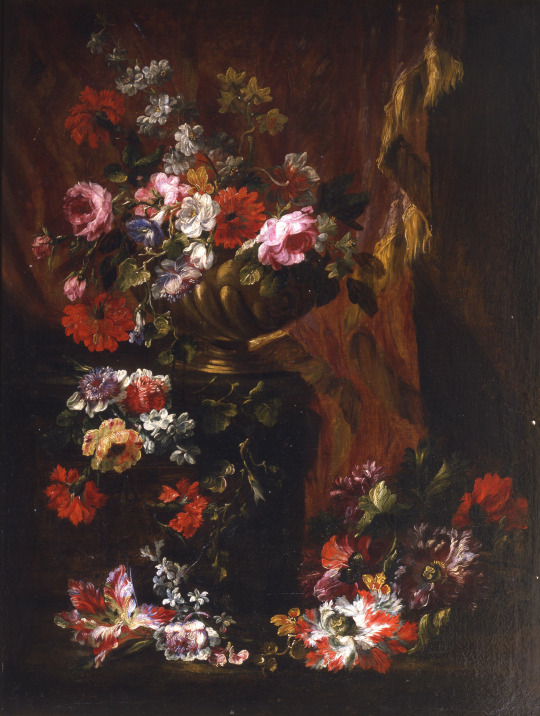
Juan de Arellano (Spanish, 1614-1676)
Florero sobre una cortina, 17th century
Real Academia de Bellas Artes de San Fernando
#Juan de Arellano#spanish art#1600s#vase on a curtain#florero#art#fine art#european art#classical art#europe#european#fine arts#oil painting#europa#mediterranean#spanish#hispanic#latin#western civilization#artwork#painting#flowers#flower#spring#classic art
70 notes
·
View notes
Text
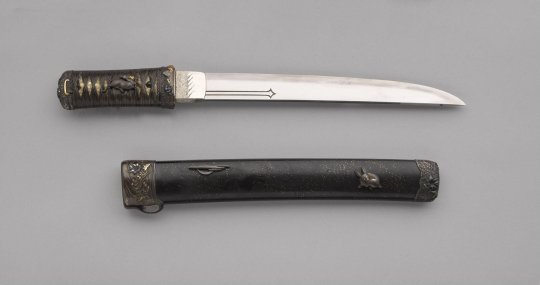
Dagger and scabbard, Japanese, 17th Century
From the Victoria and Albert Museum
#the little bunny on the scabbard is real cute#dagger#scabbard#weapon#weapons#japanese#17th century#1600s
20 notes
·
View notes
Text

A pair of solid gold earrings, modelled as galleons, with gold wire masts & rigging, enamel decoration and pearls, 1600s
15K notes
·
View notes
Text
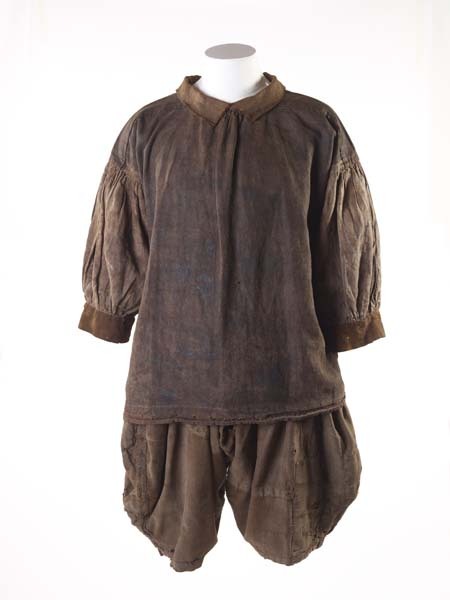

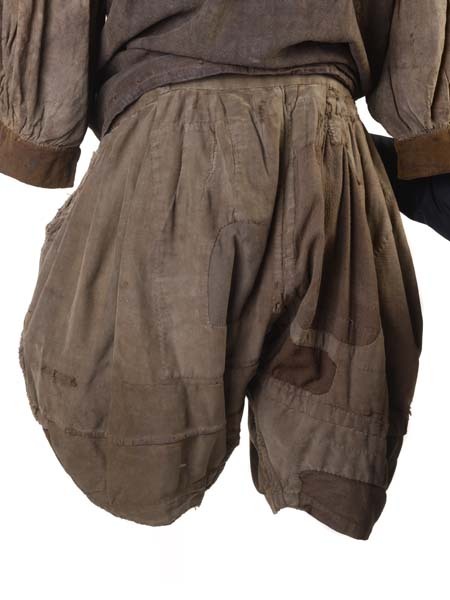

Sailor's Slops
1600s-1700s
Extremely rare survival of a shirt and breeches, called slops, as worn by sailors from the late 16th through to the 18th centuries. This unique set of loose, practical sailor’s clothing reveals life aboard ship. They are made of very strong linen to endure the hard, rough work. There is tar across the front from hauling ropes. The breeches are heavily mended and patched, which the sailor would have done himself.
The Museum of London (ID: 53.101/1b)
#shirt#breeches#menswear#fashion history#historical fashion#17th century#1600s#1610s#1620s#1630s#1640s#1650s#1660s#1670s#1680s#1690s#1700s#linen#brown#museum of london
3K notes
·
View notes
Text

A GERMAN LATE SEVENTEENTH CENTURY TABLE TOP BY FRANZ DE HAMILTON
#art#mother of pearl#seventeenth century#17th century#antique#sculpture#antique furniture#furniture#butterfly#florals#flowers#pearl#ornate#decoration#design#decorative#whimsigoth#whimsigothic#table top#1600s#butterflies#german#franz de hamilton
3K notes
·
View notes
Text








Textile Sample Book ‘テキスタイル見本帳’ Edo period (1615–1868)
Medium: Paper and cotton Dimensions: 9 1/2 x 7 in. (24.13 x 17.78 cm)
858 notes
·
View notes
Text

Jan Brueghel the Elder (1568–1625), Flowers in a Wan-Li Vase (detail)
#art#art detail#details#flowers#painting#floral painting#1600s#17th century#17th century art#creations
768 notes
·
View notes
Photo

Title illustration from a 1678 pamphlet called “The Mowing-Devil: Or, Strange News out of Hartford-shire.”
3K notes
·
View notes
Text

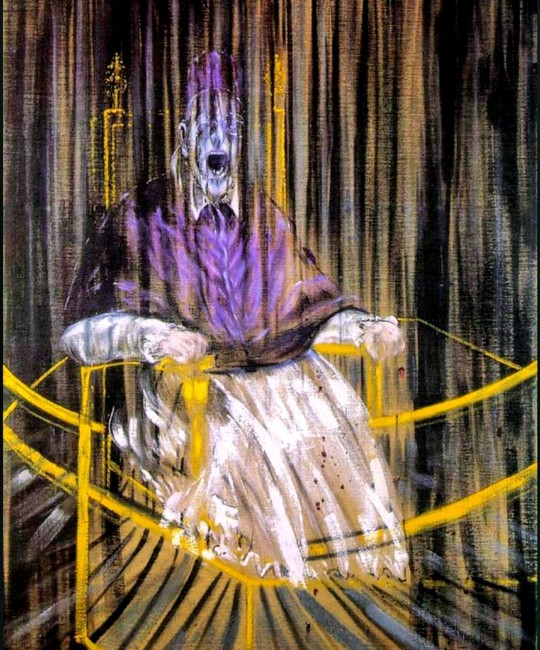
• Portrait of Innocent X (1650) by Diego Velázquez.
• Study after Velázquez's Portrait of Pope Innocent X (1953) by Francis Bacon.
#art history#culture#surreal#art#1950s#diego velazquez#portrait#francis bacon#17th century#dark#macabre#expressionism#1600s#oil painting#20th century#spain#history#oil on canvas#artwork#psychology#⚡
2K notes
·
View notes
Text
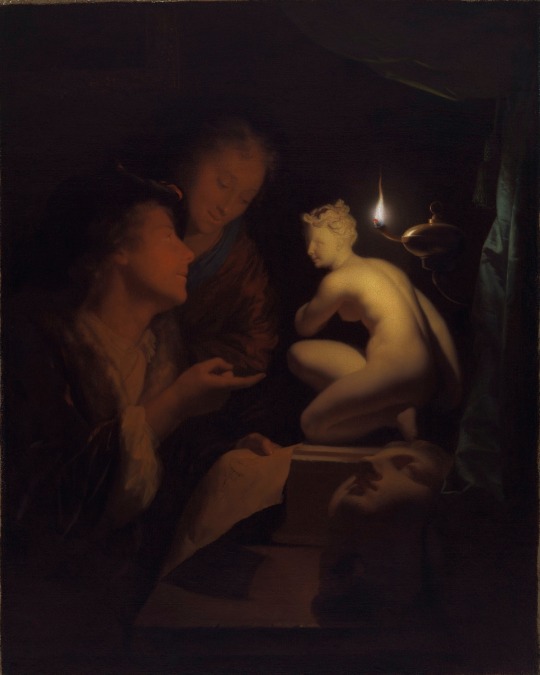
Young Man and Woman Studying a Statue of Venus, by Lamplight, 1688 - 1692
Godfried Schalcken
#Godfried Schalcken#light play#candlelight#dark#night#art#dutch art#painting#art history#1600s#17th century
959 notes
·
View notes
Text

Woman's jacket, English. About 1610–15, with later alterations. Linen plain weave, embroidered with metallic threads and spangles; metallic bobbin lace. The Elizabeth Day McCormick Collection.
622 notes
·
View notes
Text

ab. 1580-1610 Jerkin
suede (deer?), cotton, linen, silk
(Germanisches Nationalmuseum)
453 notes
·
View notes
Text

Domenico Guidi (Italian, 1625-1701)
Angel with the lance, n.d.
Ponte Sant'Angelo, Rome
#domenico guidi#italian art#italy#italian#angel with the lance#ponte sant'angelo#rome#art#fine art#sculpture#western civilization#southern europe#mediterranean#europa#european art#classical art#traditional art#angel#fine arts#1600s#baroque#christian#christianity#christentum#catholic#catholicism#catholic art#heaven#europe#european
1K notes
·
View notes
Text

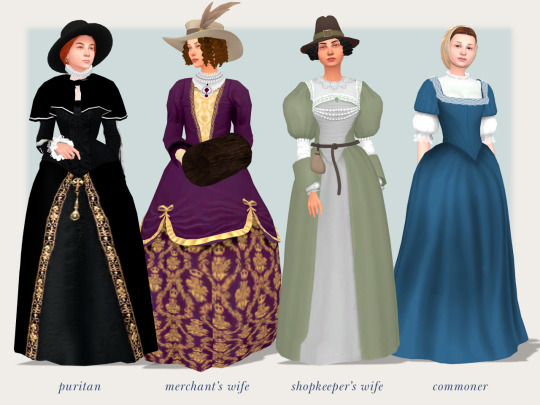

The Baroque period saw a softening of women's fashion, with the silhouette becoming fuller and higher waisted. Leg-o-mutton and three quarter sleeves added a billowy upper half to dresses. Shimmering soft satins and tonnes of delicate lace trimmings were all the rage. Necklines continued to broaden, eventually even falling off the shoulders in some styles.
You can find more of my historical content here: 1300s ✺ 1400s ✺ 1500s ✺ 1600s
OUTFIT RESOURCES
Queen: Hat | Hair | Accessory Curls | Earrings | Collar | Undershirt (TSR) | Dress | Cuffs | Ring (TSR)
Duchess: Hair | Hair Flowers | Earrings (TSR) | Necklace | Dress | Brooch | Fan | Bracelet (TSR)
Noblewoman: Hat | Hair | Mask (TSR) | Earrings (TSR) | Capelet | Dress | Gloves
Lady: Hair | Accessory Curls | Necklace (TSR) | Dress | Shawl
Puritan: Hat | Hair | Earrings | Ruff | Capelet | Top | Cuffs | Skirt
Merchant's Wife: Hat | Hair | Necklace | Dress | Muff
Shopkeeper's Wife: Hat (TSR) | Hair | Earrings (TSR) | Collar | Undershirt | Dress | Belt (TSR)
Commoner: Hood & Hair | Collar | Undershirt (TSR) | Dress
Waiting-woman: Hood | Hair | Capelet (TSR) | Top | Cuffs | Skirt
Kitchenmaid: Head Covering | Outfit | Shoes (TSR)
Country Woman: Hat | Cloak | Outfit | Sleeves | Shoes
Peasant: Head Covering & Outfit | Shoes (Base Game)
With thanks to some amazing creators: @strangestorytellersims @saturngalore @daerilia @glitterberrysims @isaax-sims @inlovewithregencyera @simsonico @leahlillith @batsfromwesteros @neutralsupply @elfdor @the-melancholy-maiden @vintagesimstress @plumbobteasociety @shespeakssimlish @ilkup @sheabuttyr @yakfarm @simverses @tekri @satterlly @simadelics @waekey @sychik @simstrouble @sewerwolfx @javitrulovesims @regina-raven @ikari-sims
#the sims 4#ultimate decades challenge#ts4 historical#1600s#baroque#ts4 history challenge#ts4 decades challenge#ts4 history cc#ts4#ts4 cc cas#sims 4#sims 4 decades challenge#sims 4 history challenge#sims 4 historical#historical cc#17th century#ts4 lookbook#sims 4 lookbook#lookbook#historical lookbook
380 notes
·
View notes
Text
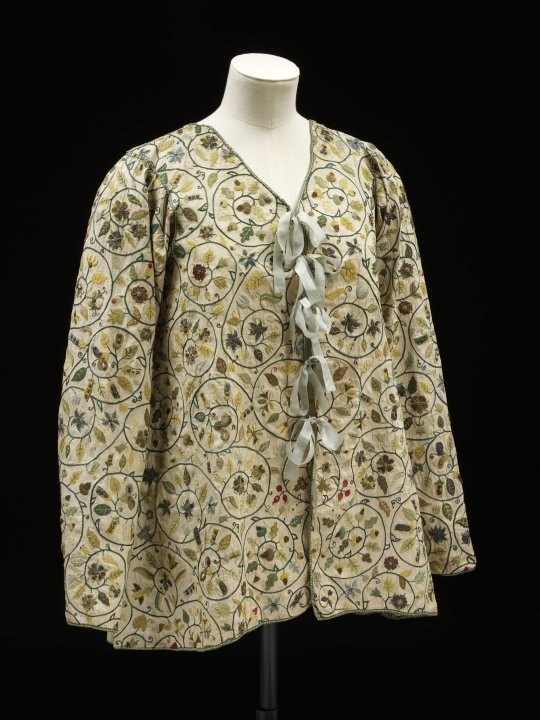
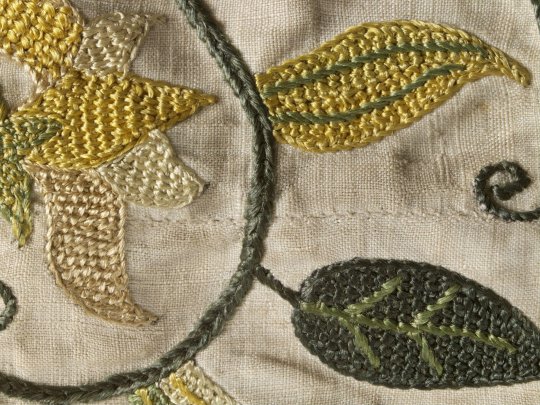
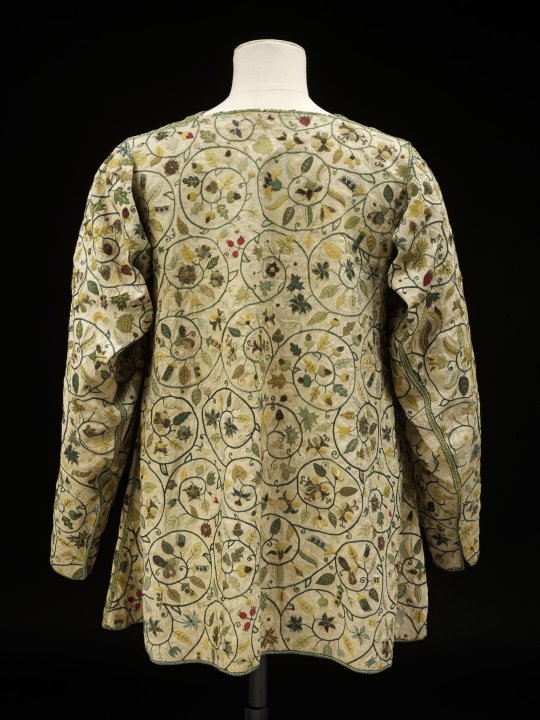
Jacket
1590-1630
Great Britain
This simple unlined jacket represents an informal style of clothing worn by women in the early 17th century. Unlike more fitted waistcoats, this loose, unshaped jacket may have been worn during pregnancy. A repeating pattern of curving scrolls covers the linen from which spring sweet peas, oak leaves, acorns, columbine, lilies, pansies, borage, hawthorn, strawberries and honeysuckle embroidered in coloured silks, silver and silver-gilt threads. The embroidery stitches include chain, stem, satin, dot and double-plait stitch, as well as knots and couching of the metal threads. Sleeves and sides are embroidered together with an insertion stitch in two shades of green instead of a conventionally sewn seam.
Although exquisitely worked, this jacket is crudely cut from a single layer of linen, indicating the work of a seamstress or embroiderer, someone without a tailor's training. It has no cuffs, collar or lining, and the sleeves are cut in one piece. The jacket was later altered to fit a thinner person. The sleeves were taken off, the armholes re-shaped, the sides cut down, and the sleeves set in again.
The Victoria & Albert Museum (Accession number: 919-1873)
#jacket#fashion history#historical fashion#17th century#1590s#1600s#1610s#1620s#elizabethan era#united kingdom#embroidery#16th century#v and a#love how they compliment the embroidery#and then roast the cutting lol
1K notes
·
View notes
Text
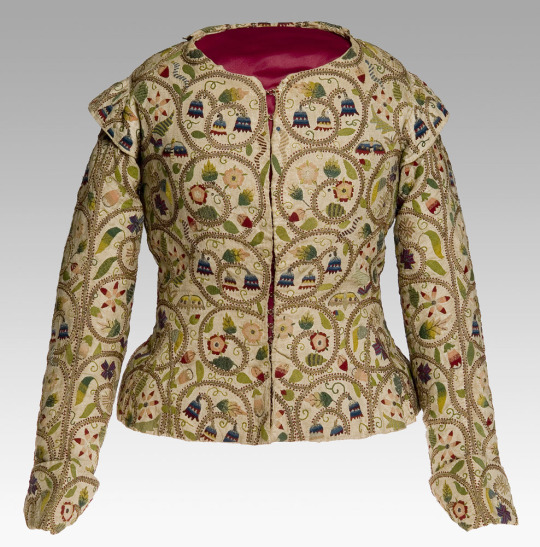
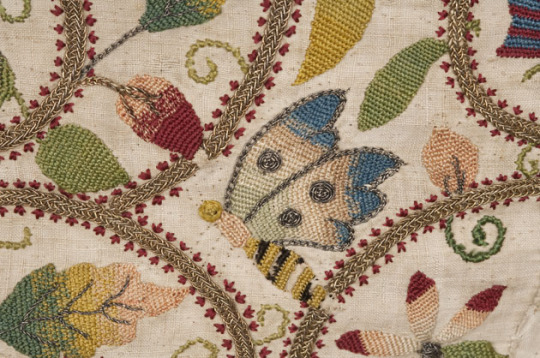
bodice, waistcoat
c. 1615-1618
linen, silk, silver, silver-gilt, metal, hand-stitched
Glasgow Museums
#17th century#waistcoat#bodice#historical clothing#historical fashion#fashion history#1600s#such a spring vibe !#frostedmagnolias
251 notes
·
View notes